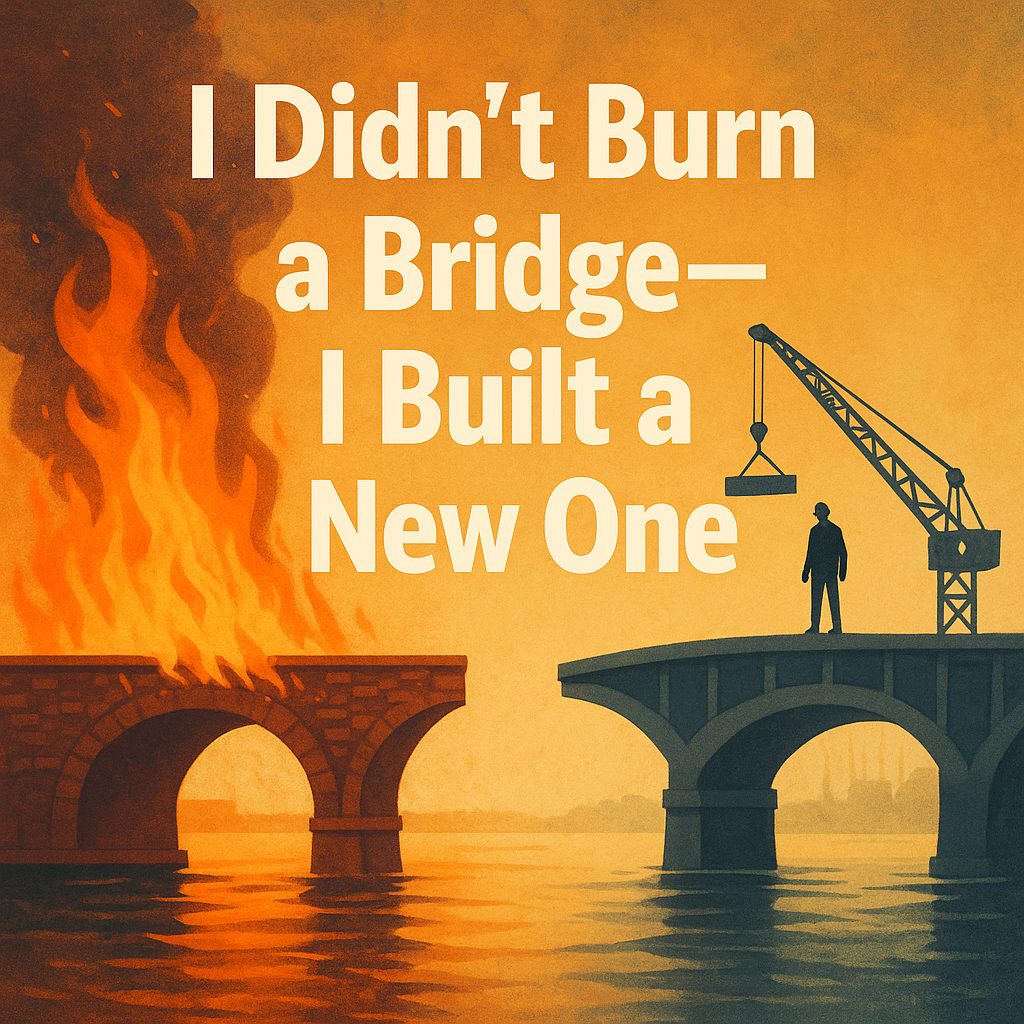
I feel grateful for an industry. That might sound weird to say but after spending 13 years in CRE I can honestly say it has given me many gifts. Friendships, tremendous career growth, and a desire to help more people to name a few. But if I’m being completely transparent, the industry also has me really frustrated. I’ve tried to leave three times. But it just keeps calling me back. So I’ve decided to see the industry for what it could be.
After 13 years in talent strategy, business development, and consulting inside the built world, the path forward has become clear. Instead of climbing the comfortable ladder to the C-Suite, I’m pursuing full transformation.
What No One Tells you about CRE from the Inside
If you’ve never worked in commercial real estate or architecture, engineering, construction, you can’t fully grasp how entrenched the inefficiencies are. It’s not just outdated, it’s deliberately structured to preserve gate keeping.
The industry’s talent approach is built on hoarding, not empowering. Major players like CBRE, JLL, and the top GC’s maintain tight control over who gets access to which projects. Meanwhile, expertise is buried under layers of management, and the actual value creators-the specialists who solve real problems-rarely get direct client contact or appropriate compensation.
You still see RFPs managed in clunky spreadsheets with ten layers of markup. You see month-long processes to secure talent that should take days. You see brilliant, mid-career professionals trapped in rigid structures that burn them out while underutilizing their capabilities.
What’s worse: we’re losing exceptional people to burnout, bureaucracy, and jobs that don’t let them live full lives. The quiet exodus is real, and the industry seems content to watch it happen.
The Shift No One Was Building For
Through my years recruiting for major CRE firms, handling business development for GCs, and serving on city permitting task forces, I noticed three undeniable trends converging:
First, the rise of specialized freelance talent-professionals who had mastered their craft and wanted autonomy over their careers.
Second, the breaking of traditional talent pipelines – fewer young people entering the field while experienced professionals are leaving or retiring.
Third, a growing demand for direct access to expertise without the bloated overhead of traditional firms.
My “aha” moment wasn’t dramatic. It was clarity through accumulation: realizing that nobody inside the existing structures were incentivized to build what was clearly needed. The incumbents were too invested in maintaining the status quo, and most industry “innovation” was just digitizing broken processes.
Someone needed to build a bridge-not just for the frustrated talent looking for a way out, but for the forward-thinking companies ready to work differently.
The Venture Theater’s Blind Spot
When I began sharing my vision with the venture capital world, the pattern-matching became immediately apparent. CRE and AEC aren’t “sexy” industries to most VCs unless you’re packaging something as “proptech” with a SaaS pricing model.
The conversations followed a predictable script: enthusiasm about the market size, followed by concerns about marketplaces being too hard to fund, culminating in subtle but clear signlas that read as: “Oh, this is your idea?” In other words, it’s a good idea, but a woman can’t execute it.
Let me be clear: I’m not bitter about this dynamic. I see the game. I understand why VCs pattern match, why they gravitate toward familiar business models, and why they prefer founders who remind them of previous successes.
But here’s what many miss: Some of the most valuable companies aren’t built by following the established playbook. They’re built by insiders who understand industry pain points at a visceral level and have the courage to challenge entrenched norms.
This isn’t Theoretical – It’s Operational
I’m not theorizing about what CRE and AEC need. We’ve closed deals, managed teams, and delivered projects. I’ve been in the rooms where decisions get made. I know how projects get scoped, won, and delivered because I’ve done it.
This practical experience has already opened doors. We’ve had substantive conversations with innovation teams at several Fortune 500 companies. They recognize the value proposition immediately because they live with these inefficiencies every day.
The platform we’re building doesn’t require explanation to industry insiders. When I describe it to CRE executives, the response isn’t “Interesting idea”—it’s “When can we start?”
Building the Bridge Forward
This bridge I’m building isn’t just a company—it’s a necessary evolution for an industry at a crossroads.
It’s for the specialists who’ve built billion-dollar campuses and never got credit.
It’s for the leaders inside corporate real estate departments who are done overpaying for access to expertise.
It’s for the next generation of talent who want to work in this field but refuse to sacrifice autonomy for security.
And yes, it’s for investors who understand that sometimes the most valuable opportunities aren’t found in the obvious places or pitched by the usual suspects. It’s for those who recognize that the future of work isn’t just about remote versus in-office—it’s about fundamentally reimagining how projects get staffed, executed, and delivered.
If you see the same cracks I do—and you’re ready to build past them—you know where to find me.
The bridge is open, and we’re just getting started.









